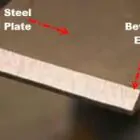Cold welding is when two pieces of metal are joined with little or no heat. It is an interesting way to weld that uses physics and a knowledge of how things are made.
Here, we’ll talk about what cold welding is, how it works, and what kinds of metals can be welded.
What does “cold welding” mean?
In cold welding, the metal pieces are joined together without the use of heat. At no point does the metal melt; it stays in a solid state. So, solid-state welding is what cold welding is called. Pressure is used to give the metal the energy it needs to stick together. In contrast to fusion welding, arc welding, and friction welding, the metal is never molten during cold welding.
Putting pressure on the metal surfaces brings them as close as possible. Because of how much pressure there is, the nano distance doesn’t matter. The metal atoms just jump from one sample to the next. This makes a nearly perfect joint with no side effects, and the two pieces of metal become one whole.
To get this result, we need a metal surface that is very clean, almost as clean as it can get. As every metal has a layer of oxide that needs to be taken off before cold welding can begin. We’ll talk more about this later, but first let’s look at the pros and cons of the process.
What are the pros of cold welding?
✦ It is the best way to join aluminium together.
Cold welding is a great way to join aluminium and copper together.
There isn’t a heat-affected zone or a zone with a lot of heat, as there are in arc welding.
Nearly perfect welding joint with no brittle compounds between the metals, microfractures, or other flaws.
Join different metals that are hard to weld together in other ways.
✦ Can weld unusual metals such as copper, gold, and others.
The power of the skilled is cut.
Cons about cold welding.
The surfaces need to be cleaned thoroughly.
Need a lot of cleaning and preparing steps that are hard to do.
The results can be messed up by things like contamination, uneven surfaces, and nanoscale structures.
The dust and debris in the air make it impossible to use in an industrial setting.
Carbon steel and hard metals can’t be welded with this method. It only works for nonferrous metals like copper, aluminium, lead, gold, etc.
It doesn’t work well on uneven surfaces, and it works best on flat surfaces.
What can cold welding be used for?
This welding method is used in many fields, such as aerospace, electronics, and car manufacturing. All welding processes work best when two different kinds of metal wires need to be joined.
This type of welding is best for putting wires underground when there is a risk of flammable gases bursting into flames during fusion welding.
This is a great way to seal containers with explosives that would otherwise be damaged by heat. People think that this type of welding is used in places where heat could do more damage or be dangerous.




